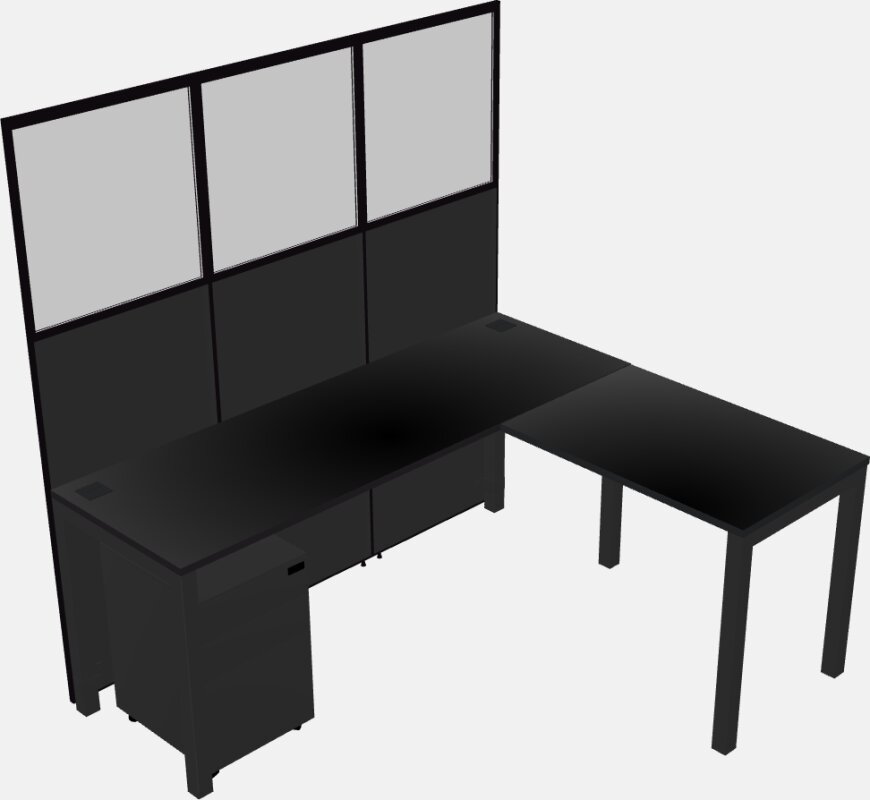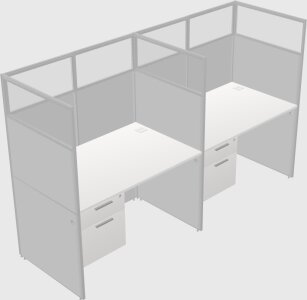In the ever-evolving landscape of office design, one element has stood the test of time and adaptation: the office cubicles. Originally introduced in the mid-20th century as a solution to open-plan offices, cubicles have transformed from bland, uninspiring partitions into dynamic and functional workspaces that cater to the needs of modern professionals.

The concept of the office cubicle was born out of a desire to strike a balance between privacy and collaboration. Before their introduction, open-plan offices dominated the scene, offering minimal privacy and often leading to distractions. The first-generation cubicles were simple, small, and isolated compartments that aimed to provide a personal workspace while still being part of a larger environment. However, they soon garnered a reputation for being sterile and isolating.
As work dynamics evolved, so did the cubicle. In the 1990s, the idea of collaboration gained traction, prompting a shift towards more open and interconnected office layouts. Cubicle walls were lowered, and the concept of "cubicle farms" emerged, with rows of interconnected workspaces designed to foster communication and teamwork. This iteration, though promoting interaction, sometimes sacrificed privacy and individual focus.
Fast forward to the present day, and office cubicles have undergone yet another transformation. The emphasis is now on creating a flexible and adaptable workspace that accommodates various work styles. Modern cubicles are designed with modular panels that can be easily configured to meet specific needs. This approach allows for both privacy and collaboration, as workers can adjust their workspace based on the task at hand. Moreover, contemporary cubicles incorporate ergonomic furniture and thoughtful design elements that prioritize employee well-being, from adjustable desks to proper lighting and acoustic panels that mitigate noise.
Technology integration has also played a pivotal role in shaping the evolution of office cubicles. With the advent of wireless connectivity, cubicles are now equipped with charging stations, data ports, and multimedia capabilities that enhance productivity. Video conferencing and virtual collaboration tools are seamlessly integrated into these spaces, enabling remote collaboration and reducing the need for dedicated meeting rooms.
The pandemic-induced rise of remote work has further redefined the role of the cubicle. As hybrid work models become the norm, cubicles are being reimagined as "touchdown spaces" for employees who come into the office occasionally. These spaces provide a designated area for focused work, equipped with all the necessary amenities, while still promoting social distancing and adhering to health guidelines.
In conclusion, the journey of office cubicles from their inception to their current state is a testament to the ever-changing nature of work and the adaptability of office design. From isolated boxes to collaborative hubs, and now as flexible workstations in a hybrid world, cubicles have continuously evolved to cater to the needs of the workforce. The key takeaway is that a successful office cubicle design goes beyond aesthetics; it should prioritize the balance between privacy and collaboration, comfort and functionality, and most importantly, the well-being and productivity of the individuals who occupy these spaces.





Comments